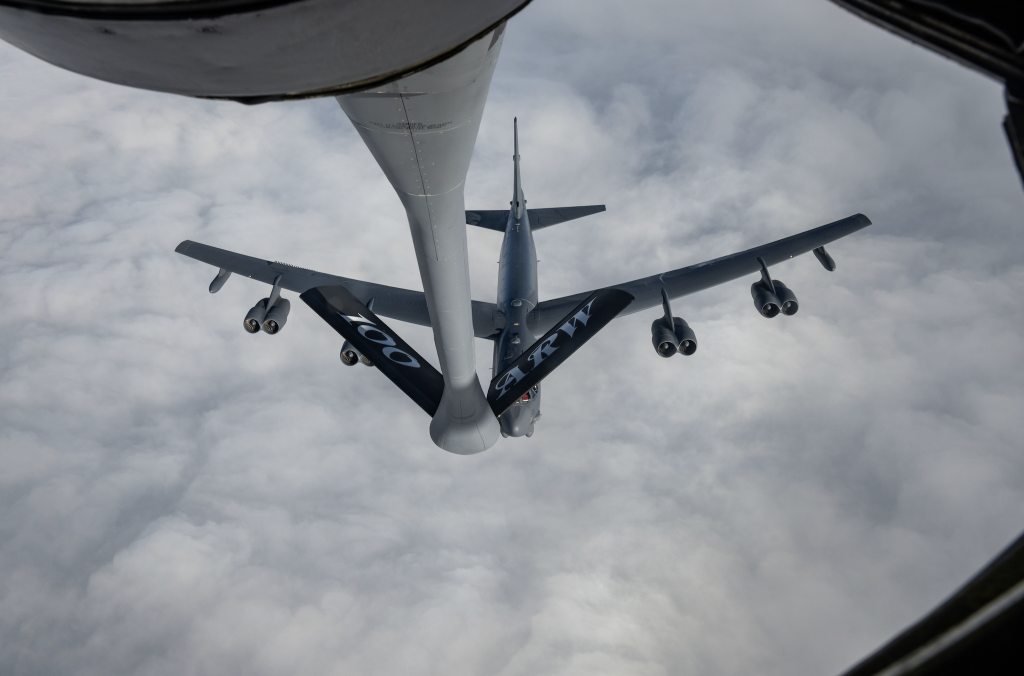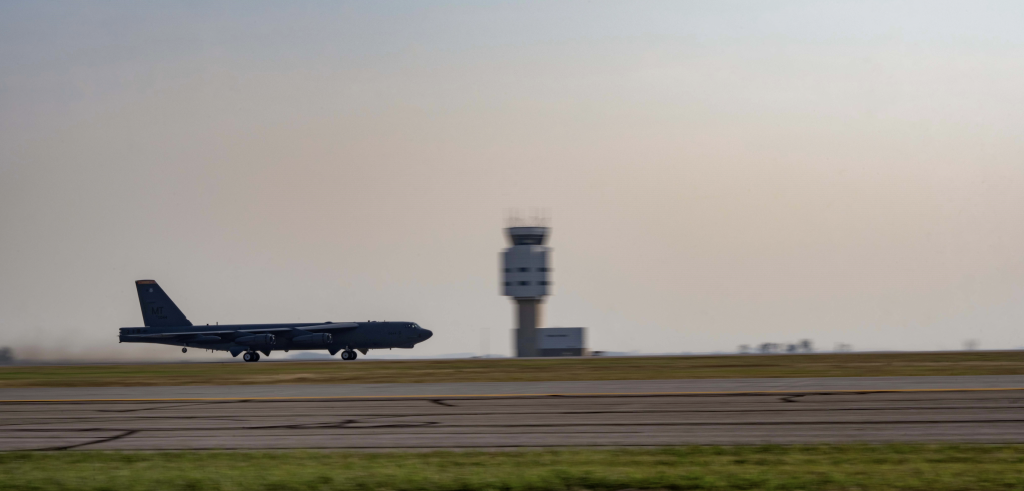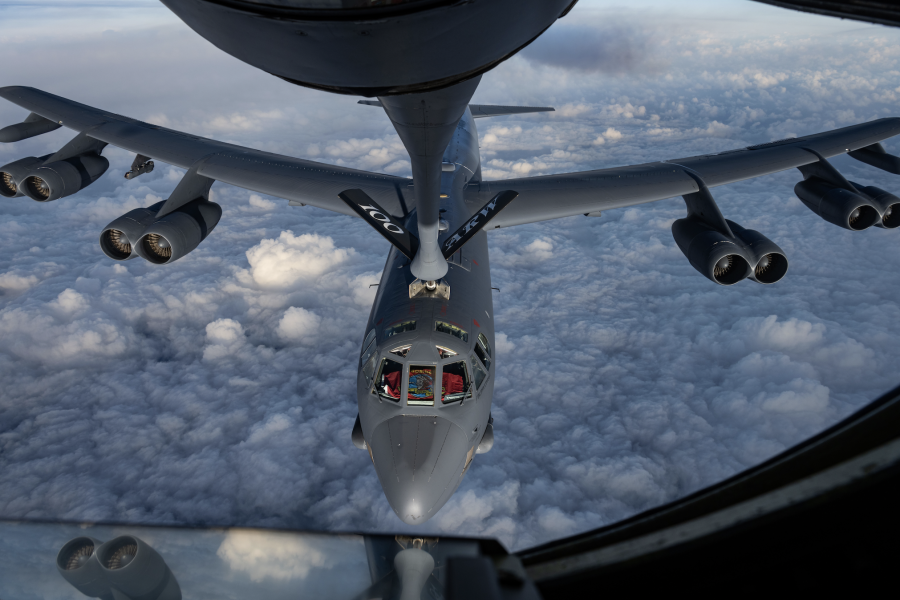Two B-52 bombers from Minot Air Force Base, N.D., flew to and from Europe in recent days, taking part in a training mission along the way with more than two dozen fighters, tankers, and other assets from six other NATO allies over Poland, aimed at sharpening command and control in a contested environment.
The strategic bombers were joined by aircraft from Denmark, Germany, the Netherlands, Poland, Spain, and the U.K. for an exercise known as F2T2 on Sept. 11. The B-52s returned to Minot on Sept. 12 as part of what U.S. Air Forces in Europe described as a “double transatlantic” trip.
“Our ability to work side-by-side with Allies is a key advantage, sending a message of assurance to our friends while also deterring potential aggressive actions by strategic competitors,” Gen. James Hecker, commander of USAFE, said in a statement.

Four Spanish F-18M Hornets joined the exercise, flying in from Mihail Kogalniceanu Air Base in Romania. The base is currently hosting eight Hornets from the Spanish Air Force for NATO’s Air Policing mission, along with more than 150 military personnel as part of its PAZNIC Detachment, which began a four-month rotation last month.
“These kinds of exercises are an incredible opportunity to train and demonstrate Spanish F-18 Hornet capabilities and determination,” Lt. Col. Rafael Ichaso, detachment commander, said in a release. “Almost a six-hour flight with refueling, in coordination with other NATO assets, to deliver our high precision strike capabilities against any possible target is a big and important challenge for the PAZNIC detachment.”
Poland provided ISR assets for the mission, while Germany and the U.K. ensured refueling support along with USAF KC-135 Stratotankers from the 100th Air Refueling Wing, based at Royal Air Force Mildenhall. The Royal Netherlands Air Force’s fifth-generation F-35s, the Danish Air Force’s F-16s, and Germany’s Tornado fighters also participated.
A NATO release noted that the training also included units from air, land, sea, cyber, and space domains, all focused on integrating multidomain effects.

“Executing these multidomain exercises ensures NATO assets are ready to respond to any potential threat to the Alliance,” added Hecker, calling the bomber mission “successful.”
This marks the second B-52 appearance in Europe in three months. In July, two B-52s from the 2nd Bomb Wing at Barksdale Air Force Base, La., touched down at Mihail Kogălniceanu for the first time, also marking the bomber’s inaugural flight through Finnish airspace. After crossing Norway and Finland, the bombers were intercepted by two Russian fighters over the Barents Sea. The intercept remained professional—unlike past encounters over the region.
This latest mission in Poland also coincided with a visit by U.S. Secretary of State Antony Blinken to meet with Polish Foreign Minister Radoslaw Sikorski on Sept. 12. A day earlier, Blinken and U.K. Foreign Secretary David Lammy were in Ukraine, meeting President Volodymyr Zelenskyy and top officials to discuss continued support for Kyiv’s defense against Russia. Poland has voiced its support for Ukraine’s ongoing calls for the West to approve long-range missile strikes into Russia to counter Moscow’s aerial attacks.
“As the West, we shall continue supplying Ukraine with advanced air defense and antimissiles defense systems,” Sikorski said in a joint press conference. “We shall also lift the ban on using long-range weapons…. and we hope that more intense activities will be taken with regard to seizing frozen Russian assets.”
Blinken, however, declined to commit to doing so.
“What we learned from our Ukrainian partners will inform discussions that we’ll be having with other allies and other partners in the days and weeks ahead, as we work through and think through the coming months,” he said.
Since Russia’s invasion of Ukraine ignited a full-scale war on Europe’s eastern edge, NATO members have been ramping up efforts to bolster their militaries and conduct exercises. While the U.S. began bomber task force missions in Europe in 2018, there has been a steady rotation in recent months.
